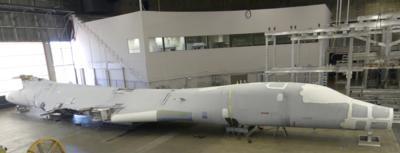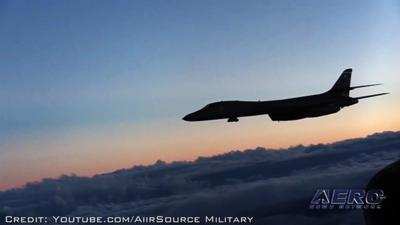Wed, Mar 16, 2022
Institute for Aviation Research to Create Computer Renderings of Parts, Structures
The Air Force has awarded $100 million to the Wichita State University’s National Institute for Aviation Research (NIAR) to continue its work on digitizing the prodigious amount of information needed to create virtual renders of the B-1 bomber's structures.

The goal of the Digital Engineering program is to develop a computerized rendition for a variety of structures, parts, and systems for the B-1 platform, freeing them from the constraints of referencing aging assortments of now-vintage blueprints. The program will allow Air Force personnel to "proactively develop repairs, reduce the cost and schedule for parts procurement by eliminating the burden of interpreting legacy USAF drawings, and increase the number of vendors who are capable of producing parts for the B-1 platform," says Joseph Lay, B-1 SPO material leader for structures. "Digital Engineering will not only help reduce the time it takes to develop repairs but also to install them. We will be able to develop and test repairs well in advance virtually ensuring first time success and improving aircraft availability.”

The long service life of the B-1 has created an unusual set of problems, being born in a different era and designed with older, increasingly outmoded methodology. The platform is still quite potent, however, being used through nearly every air force operation in the last 2 decades to the point that it required an extension to its certified test life to keep it in the air. NIAR's assistance in digitizing the design has already yielded some models of support fixtures and some parts, which have entered use with third-party vendors and Depot Maintenance facilities. Eventually, the full package of data will be used to allow for digital analysis, testing, and evaluation following the design of new replacement parts for the B-1. The first complete piece that NIAR completed was a structural model of a single B-1 wing, which quickly served as a proof of concept that allowed expansion into the entire airframe.
“We are excited to continue this partnership and move the B-1 further into the virtual world. We could not have achieved this without the great partnership and team between the SPO, NIAR, and NCMS to make this all happen,” said Lay.
More News
Homing [ICAO] The procedure of using the direction-finding equipment of one radio station with the emission of another radio station, where at least one of the stations is mobile, >[...]
Aero Linx: European Regions Airline Association (ERA) The European Regions Airline Association (ERA) represents a diverse membership of over 50 airlines and more than 150 associate>[...]
A Few Questions AND Answers To Help You Get MORE Out of ANN! 1) I forgot my password. How do I find it? 1) Easy... click here and give us your e-mail address--we'll send it to you >[...]
While On Short Final, About 300 Ft, The Pilot Performed A Forced Landing Near Trees On September 7, 2025, about 0932 eastern daylight time, a CubCrafters Carbon Cub EX airplane, N4>[...]
Severe Icing The rate of ice accumulation is such that ice protection systems fail to remove the accumulation of ice and ice accumulates in locations not normally prone to icing, s>[...]
 ANN's Daily Aero-Term (10.13.25): Homing [ICAO]
ANN's Daily Aero-Term (10.13.25): Homing [ICAO] ANN's Daily Aero-Linx (10.13.25)
ANN's Daily Aero-Linx (10.13.25) ANN FAQ: Q&A 101
ANN FAQ: Q&A 101 NTSB Prelim: CubCrafters Carbon Cub
NTSB Prelim: CubCrafters Carbon Cub ANN's Daily Aero-Term (10.14.25): Severe Icing
ANN's Daily Aero-Term (10.14.25): Severe Icing




